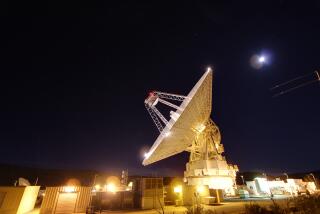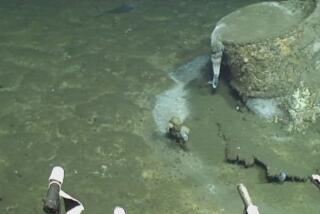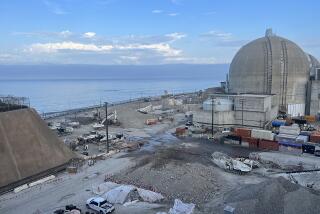A-Weapon Cleanup Estimates Doubted : Environment: Lab sites will take much longer to restore than the projected 30 years, study says. It urges shifting oversight away from Energy Dept.
WASHINGTON — The cleanup of massive radioactive pollution at the nation’s nuclear weapons laboratories may take much longer than the 30 years projected by the Department of Energy, and some sites may never be restored sufficiently to permit public access, according to a congressional study being released today.
The congressional Office of Technology Assessment concluded after an 18-month investigation that the Energy Department has yet to reach a realistic assessment of the magnitude and cost of cleaning up wastes and contamination from more than four decades of weapons production.
In sum, the Energy Department “has neither the capability or credibility” for the task, said Robert W. Niblock, the office’s oceans and environment program chief.
Unofficial estimates of the eventual cost of the cleanup and environmental restoration run to as much as $200 billion. A five-year projection made by the Energy Department last year put the cost at $34.7 billion through fiscal 1996.
In its budget sent to Congress last week, the Bush Administration asked for $4.4 billion for cleanup activities in the coming next year.
The chief problems include permanent disposal of millions of gallons of high-level liquid wastes in temporary storage tanks at Hanford, Wash., and Savannah River, S. C., and the cleanup of plutonium-contaminated soil at the Rocky Flats laboratory outside Denver. They also include uranium pollution at Fernald, Ohio, and dangerous wastes dumped in the ground at the Idaho National Engineering Laboratory and the Oak Ridge National Laboratory in Tennessee.
“In many instances, certain waste and contamination now present at (Department of Energy) sites . . . will probably remain there considerably beyond the year 2019,” the report said.
In addition to the staggering technical problems of the cleanup and permanent disposal of nuclear wastes, the report concluded that public concerns over health and environmental impacts have yet to be adequately addressed. The Energy Department, it said, still lacks the necessary expertise and the organization to deal with the problems. Moreover, “substantial credibility and public acceptance problems continue to hinder progress.”
Among the chief recommendations of the 212-page report, requested by the Senate Armed Services Committee, is that regulation and oversight of nuclear waste management be taken out of the Energy Department.
“Substituting independent regulatory authority for (the Energy Department’s) self-regulation in radioactive waste management,” it said, “could enhance the credibility and quality of waste management.”
It suggested that Congress consider establishing an independent national commission for the assignment, or possibly vest responsibility in the Nuclear Regulatory Commission or the Defense Nuclear Facilities Safety Board. The NRC has responsibility for civilian nuclear power regulation, and the safety board monitors some activities at Energy Department weapons laboratories.
Although the report was critical of the Energy Department’s progress so far, it noted that it has made “laudable efforts” to bring about “cultural” changes in the laboratory complex.
Soon after taking over the department, James D. Watkins vowed to bring new attitudes to the laboratories, where the imperative of weapons production had far outweighed health and environmental concerns.
The Energy Department said that the Office of Technology Assessment conclusions confirmed its own view that the cleanup is “a problem of enormous proportion and will require yet unavailable technologies and trained personnel to resolve it.”
The report said also that the department has an inadequate understanding of potential threats to health beyond the boundaries of the weapons sites.
“Among the missing elements are a coherent strategy for evaluating potential off-site human exposure to radioactive and hazardous contaminants . . . “ the report concluded.
A study released last year showed that as many as 13,500 residents of the area near the Hanford site, where plutonium was produced, may have received heavy doses of radiation to their thyroids during the late 1940s.
Efforts to determine the link between actual thyroid cancer cases and iodine released from Hanford are under way.
More to Read
Sign up for Essential California
The most important California stories and recommendations in your inbox every morning.
You may occasionally receive promotional content from the Los Angeles Times.










